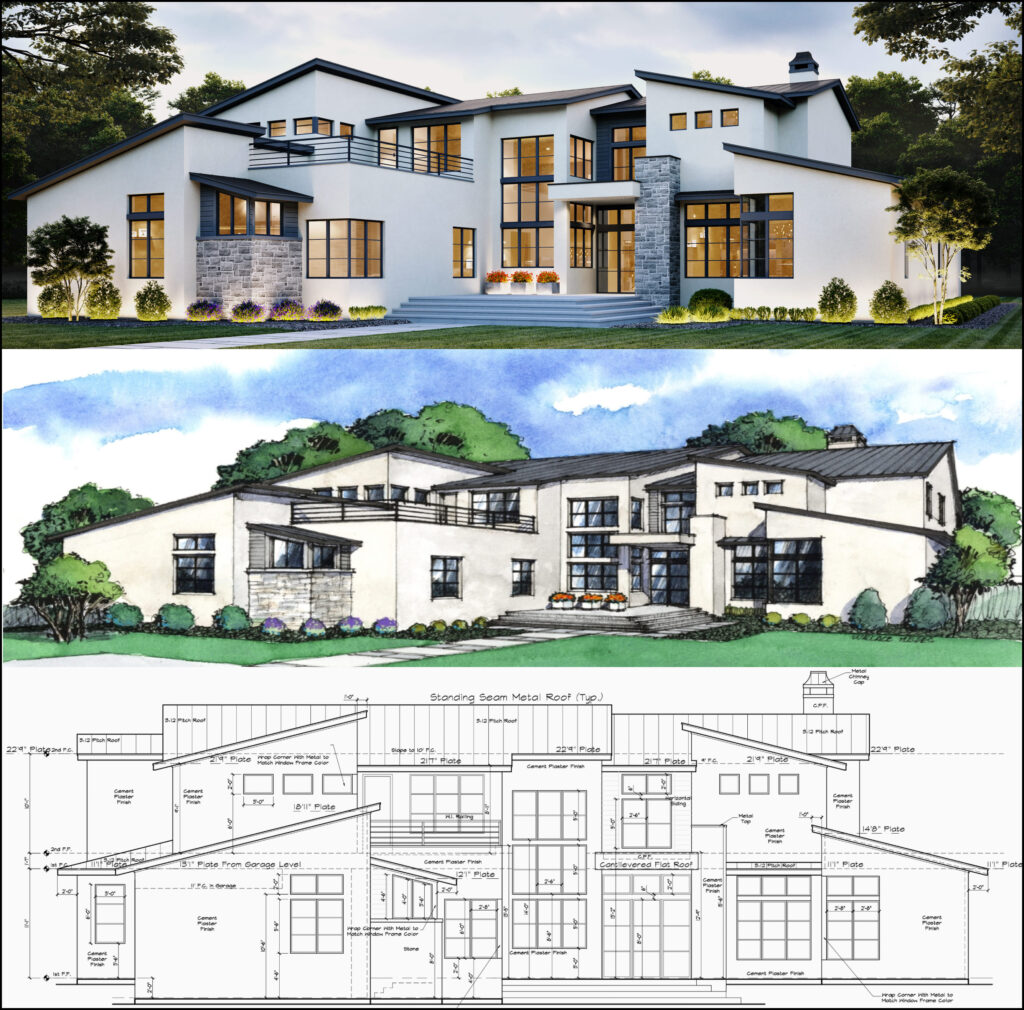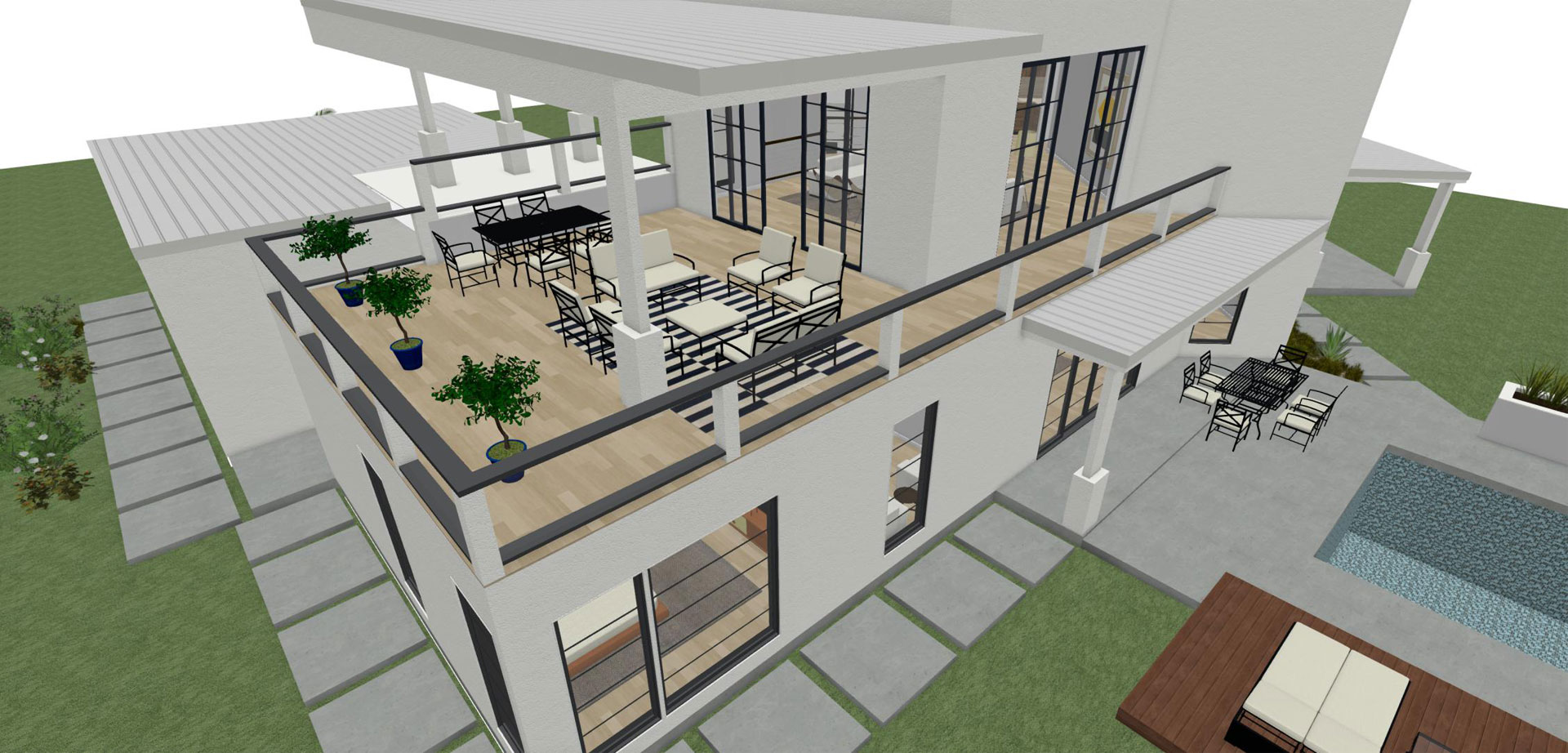The Influence of Technical Improvements on the Style Practices of Contemporary Architects
The rapid advancement of technological devices has significantly improved the style landscape for contemporary designers, fostering unprecedented degrees of advancement and sustainability. The integration of Structure Information Modeling (BIM), parametric layout, and expert system has not only structured partnership among diverse groups however also redefined task execution. However, as designers welcome these improvements, they are confronted with complicated challenges that could affect their innovative procedures. Exploring these dynamics reveals a nuanced interplay between innovation and standard layout methodologies, prompting a better evaluation of what the future holds for building methods.
Development of Architectural Equipment
How have architectural devices changed the design and construction processes over the centuries? The advancement of architectural tools has actually substantially affected the efficiency, precision, and imagination of design and building and construction. In old times, architects depend on primary instruments such as plumb bobs, measuring poles, and basic geometry to develop structures. These devices laid the structure for early building practice, permitting for the building of iconic structures, albeit with limitations in accuracy and complexity.
With the arrival of the Renaissance, the introduction of the compass and the protractor marked a pivotal shift. These devices made it possible for designers to attain greater accuracy in their styles, facilitating the development of even more intricate and in proportion structures. The Industrial Change further reinvented architectural experiment the introduction of mechanized devices and products, enabling larger and much more ambitious jobs.
In the 20th century, the growth of computer-aided design (CAD) software transformed the landscape when again, supplying engineers with unprecedented capabilities in modeling and visualization. Today, advanced tools such as Building Info Modeling (BIM) and parametric style software program proceed to push the boundaries of architectural advancement, making it possible for a more integrated method to style and building and construction procedures.
Boosted Partnership in Style
As modern technology remains to develop, improved cooperation in style has actually become a cornerstone of modern architectural practice. The integration of digital tools such as Building Info Modeling (BIM), cloud-based platforms, and advanced visualization software application has changed the means engineers, designers, and stakeholders interact throughout the layout procedure. These tools help with real-time communication, permitting groups to share ideas, modifications, and responses immediately, regardless of geographical area.

Additionally, interdisciplinary partnership has actually been structured via these technological innovations, enabling designers to function much more very closely with other experts, such as urban coordinators and ecological professionals. The outcome is a more cohesive strategy to make that considers different point of views and knowledge. Ultimately, improved partnership in design visit our website is not simply a fad; it is essential for creating cutting-edge, practical, and aesthetically pleasing architecture in a progressively intricate globe.
Sustainability With Innovation
Sustainability in style has progressively ended up being intertwined with technological development, driving the market towards ecologically liable methods - cda architects. Contemporary designers are leveraging innovative technologies to decrease environmental effect while enhancing the efficiency of buildings. One noticeable example is the usage of Structure Info Modeling (BIM), which permits accurate preparation and source allotment, lowering waste during building and construction and promoting energy efficiency throughout a building's lifecycle
In addition, smart materials and energy-efficient systems are being incorporated right into designs to optimize resource use. Technologies such as solar batteries and green roof systems harness renewable resource sources, adding to reduced carbon footprints. Furthermore, the application of fabricated intelligence in style procedures enables architects to replicate and analyze power intake, guiding decisions toward even more lasting results.
The check here assimilation of sustainable technologies not only straightens with international ecological goals however likewise satisfies an increasing demand from consumers for green remedies. As engineers welcome these developments, the focus shifts towards producing areas that are not just visually pleasing yet additionally functionally lasting, thereby redefining the standards of modern style. This way, technology functions as a driver for sustainability, enabling engineers to design buildings that respect and boost the all-natural atmosphere.
Challenges in Implementation
While technical improvements in design hold terrific promise for boosting sustainability, their application frequently encounters substantial difficulties - cda architects. One primary challenge is the steep understanding curve related to brand-new innovations. Architects and building and construction experts may need comprehensive training to effectively use sophisticated software and tools, which can postpone job timelines and enhance prices
Furthermore, the assimilation of emerging modern technologies, such as Structure Details Modeling (BIM) and sustainable products, frequently necessitates partnership across multidisciplinary groups. This collaboration can be hindered by differences in competence, operations, and communication styles, leading to prospective conflicts and inadequacies.
Financial restrictions better complicate the adoption of ingenious technologies. Numerous building companies, especially smaller sized ones, might do not have the resources to purchase cutting-edge devices, limiting their ability to take on bigger firms that can pay for such financial investments.
In addition, regulative structures and building codes might not equal technical developments, producing uncertainty and possible conformity issues. This challenge can dissuade designers from completely accepting new technologies, as the risk of non-compliance may outweigh the benefits. Dealing with these application challenges is crucial for the successful assimilation of technical innovations in modern architectural practices.
Future Trends in Style
The obstacles related to the application of new technologies in style have actually motivated a reevaluation of future patterns within the industry. As engineers navigate issues such as sustainability, urbanization, and social equity, they are significantly embracing innovative technologies to improve layout efficiency and ecological performance.
One popular pattern is the combination see this of synthetic intelligence (AI) in the style process. AI devices can analyze vast datasets to educate layout decisions, boosting both creativity and capability. Structure Information Modeling (BIM) continues to advance, enabling real-time partnership among stakeholders and helping with structured task management.
Sustainable layout techniques are also acquiring energy, with engineers focusing on adaptive reuse and regenerative style concepts that lessen source intake and waste. The incorporation of smart materials and renewable resource resources will certainly better enhance the resilience of buildings in the face of climate modification.

Verdict
Technical innovations have significantly reshaped architectural style methods, promoting boosted accuracy, collaboration, and sustainability. The integration of tools such as Building Info Modeling and parametric style software program, along with fabricated knowledge and wise materials, empowers architects to address complex challenges more properly.
Comments on “How CDA Architects Combine Creative Thinking and Performance in Modern Architecture”